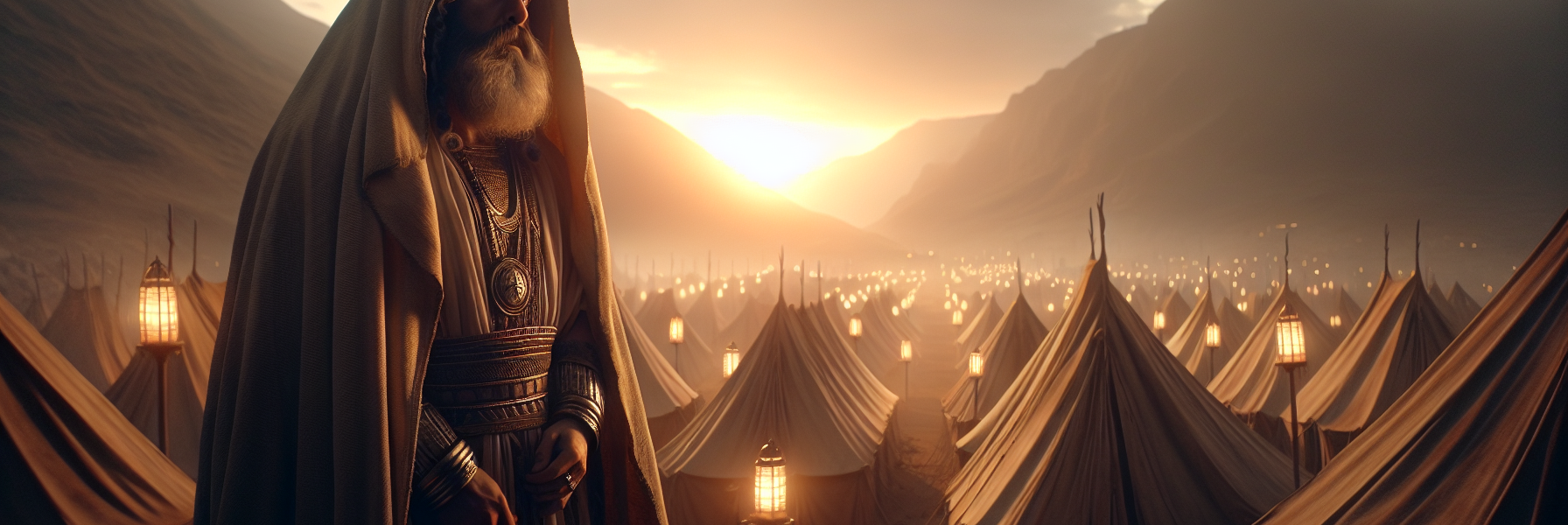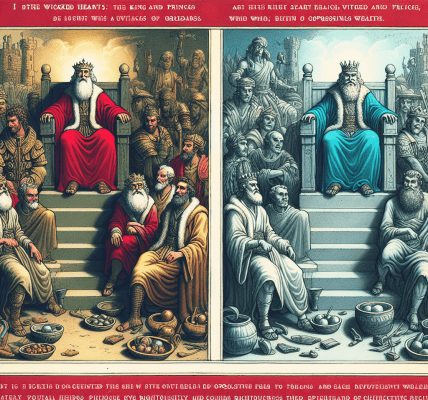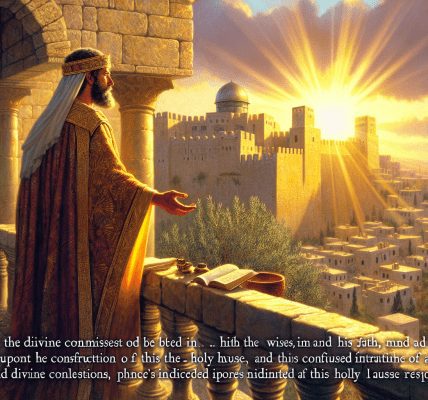**The Day of Atonement: A Sacred Reconciliation**
The sun had not yet risen over the camp of Israel, but the high priest Aaron was already awake, his heart heavy with the weight of the day ahead. It was the tenth day of the seventh month—*Yom Kippur*, the Day of Atonement. The air was thick with solemnity, for this was the one day in the year when the sins of the entire nation would be ceremonially cleansed before the Lord.
Aaron had spent the previous days in preparation, separating himself from his household, abstaining from all indulgence, and meditating on the holiness of God. He knew that to approach the Most High carelessly was to invite death, for the Lord had warned, *”Tell your brother Aaron that he shall not enter the Holy Place behind the veil at any time… lest he die.”* (Leviticus 16:2). Only on this day, with exact obedience, could he stand in the presence of the Almighty.
### **The Ritual of Purification**
Before dawn, Aaron bathed his entire body in pure water, symbolizing the need for complete purification. He then dressed not in his glorious high priestly garments, but in simple linen—humble attire fitting for a day of repentance. The tabernacle courtyard was silent except for the distant bleating of the sacrificial animals.
First, Aaron took a young bull from the herd, his own sin offering. Placing his hands upon its head, he confessed his own sins and those of his household, transferring their guilt onto the innocent beast. With a sharp knife, he slew the bull, catching its blood in a basin. The coals from the altar of burnt offering glowed as he took a censer full of fire and two handfuls of finely ground incense. Then, with trembling hands, he passed through the outer chamber of the tabernacle and approached the veil that separated the Holy Place from the Most Holy Place—the dwelling of God.
### **Entering the Presence of God**
Pushing aside the heavy curtain, Aaron stepped into the sacred darkness, illuminated only by the flickering glow of the censer. The smoke of the incense billowed up, forming a fragrant shield between him and the mercy seat atop the Ark of the Covenant, where the glory of God rested. If he came without this covering, he would perish.
Carefully, he sprinkled the bull’s blood seven times before the mercy seat, the rhythmic droplets a solemn reminder that without the shedding of blood, there could be no forgiveness (Hebrews 9:22).
### **The Two Goats: Substitution and Banishment**
Exiting the Most Holy Place, Aaron turned his attention to the two goats that had been brought before the tabernacle. The assembly of Israel watched in hushed reverence as he cast lots over them—one lot *”for the Lord”* and the other *”for Azazel”* (the scapegoat).
The first goat was slaughtered as a sin offering for the people. Again, Aaron entered the Most Holy Place, this time carrying the blood of the goat. He repeated the sprinkling before the mercy seat, interceding for the sins of the nation. Emerging once more, he applied the blood to the horns of the altar of incense, purifying it from the defilement of Israel’s transgressions.
Then came the most dramatic moment of the day. Aaron placed his hands upon the head of the second goat, the scapegoat, and confessed over it *”all the iniquities of the people of Israel, and all their transgressions, all their sins”* (Leviticus 16:21). A collective sigh rose from the crowd as the weight of their guilt was symbolically transferred. A chosen man, strong and sure-footed, then led the goat away into the wilderness, where it would be released, never to return—a vivid picture of God’s promise: *”As far as the east is from the west, so far does He remove our transgressions from us.”* (Psalm 103:12).
### **The Final Sacrifices and Cleansing**
Aaron then offered the burnt offerings—a ram for himself and another for the people—sending the sweet aroma of surrender heavenward. The fat of the sin offering was burned on the altar, and the remains of the bull and goat were taken outside the camp to be utterly consumed by fire, a sign that sin’s penalty had been fully borne.
As the sun began to set, Aaron removed his linen garments, bathed once more, and dressed again in his high priestly robes. The people, who had spent the day in fasting and repentance, now looked upon him with hope. The atonement was complete.
### **The Divine Assurance**
That night, as the camp rested, the Lord’s presence remained among them, a testimony that His justice had been satisfied and His mercy extended. The Day of Atonement was not merely a ritual—it was a divine promise, a foreshadowing of the ultimate sacrifice yet to come, when a greater High Priest would offer His own blood *”once for all”* (Hebrews 9:12).
And so, year after year, Israel remembered: God is holy, sin demands payment, but He Himself provides the way of reconciliation.




